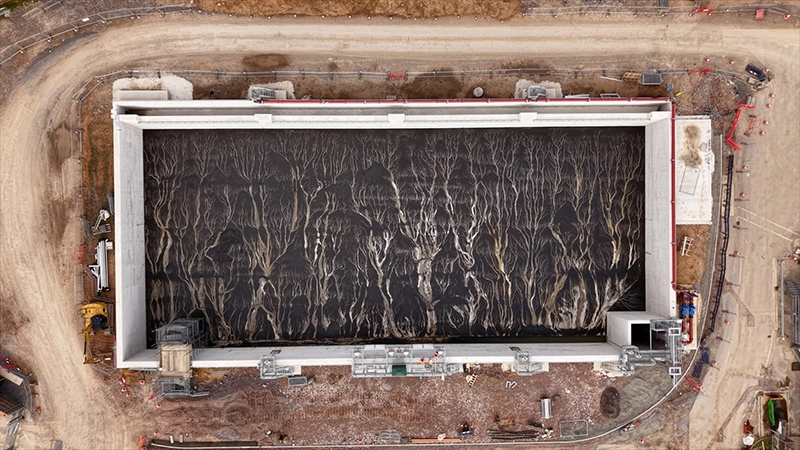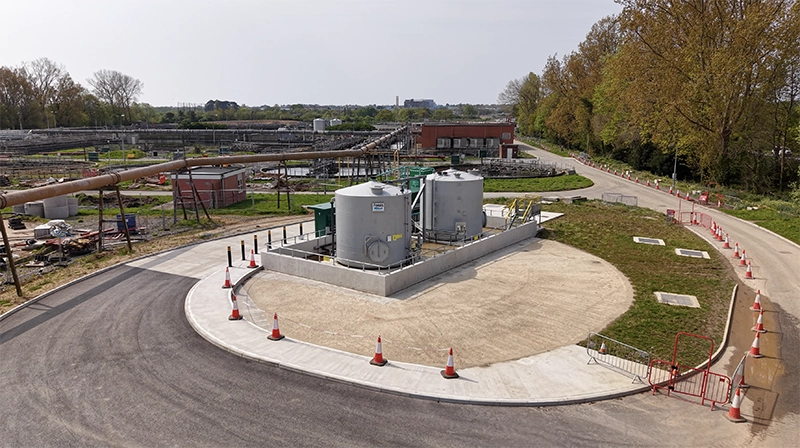- Home
- Our purpose
- Investment schemes
- Holdenhurst water recycling centre
Holdenhurst water recycling centre
We’ve invested more than £30 million to enhance the Holdenhurst water recycling centre on the outskirts of Bournemouth.
What have we done and why is it needed?
We’re helping to protect the town’s popular beaches by increasing capacity and reducing the automatic operation of storm overflows.
An extra nine million litres of additional storage have been added at the Holdenhurst site next to the A338 with the building of a new 65-metre-long storm tank, which was ready by the regulatory date of March 2025.
We’ve also boosted our ability to remove harmful chemicals from wastewater to ensure we protect our rivers and coastlines.
Two new chemical dosing units have been put in place at the site, including one treatment lane with 50 membranes to help with ammonia removal – the largest single-unit installation of this type in the country.
Currently, the Holdenhurst site serves a population of approximately 180,000 which increases significantly during the summer months.
By adding this new equipment on site, we’ll be able to ensure that the treatment of sewage keeps pace with the local population in the Bournemouth area, which is projected to grow further.

What about the impact on the local environment?
The extra storage will help to reduce the automatic operation of storm overflows nearby by nearly a third.
Boosted processes for removing chemicals from sewer flows arriving at the water recycling centre can also reduce the impact of nutrients, such as phosphorus, ammonia and nitrogen that can cause excessive growths of algae and damage the ecology of our waterways.
What we've done
Construction of both the chemical removal and storage elements of the enhancement continued throughout 2024 and early 2025.
More than 40 team members worked full time at the site, with more than 40,000 tonnes of earth excavated to house the massive new storage tank next to the A338.
More than 750 tonnes of steel reinforcement and 2,500 cubic metres of concrete were used to construct the tank.

The 6.5-metre-deep tank can retain nine million litres of water during storms, reducing automatic discharges to the environment from storm overflows and allowing the storm water to be treated – that’s the equivalent of nearly four Olympic swimming pools.
More than 150 concrete piles – equivalent to 3.5 kilometres – formed foundations for the new tank, and a further three kilometres of steel piles were driven to allow excavation for the tank.
We invested £1 million to reduce groundwater levels to eight metres below the surface to help the tank construction with 1.3 million cubic metres of water pumped out of the ground and returned to the River Stour.
We've also built two chemical dosing units capable of holding 125,000 and 90,000 litres of water treatment chemicals respectively. This will enhance our ability to remove harmful chemicals, including some that are frequently found in many household products, from wastewater to ensure we protect our rivers and coastlines.
The units were built by our own Off Site Build team, which is responsible for designing, manufacturing and supplying pre-assembled and prewired equipment, helping to speed up the construction process and make it more efficient.

A further treatment process, featuring 50 MABR membrane units to help control suspended solids and improve treatment of the wastewater, is also the largest single-unit installation of its type in this country.
Meanwhile, all surplus sludge from the water treatment process is transferred from the Holdenhurst site to the nearby Berry Hill Bioresources Centre.
A £5 million 18-month enhancement of that site was also completed in spring 2025, seeing 750 cubic metres of additional sludge storage built and existing storage tanks and transfer pumps repurposed to improve the handling of sludge and minimise environmental impact.
What else are we doing?
We are committed to reducing overflow discharges and minimising the environmental impact of our sewage treatment processes, with £1.4 billion being spent between 2020 and 2025 on water and sewerage improvements.
We’ve recently re-lined a mile of sewer pipework in Dorset alone to further protect the environment, preventing rainwater from infiltrating the network and sewer flows escaping from them.
Schemes to build a new pipeline along the Jurassic Coast at West Bexington and separate rainwater from sewers around the iconic Portland Bill lighthouse were completed in 2023.
Meanwhile in Lytchett Matravers, near Poole, work is expected to start on a wetland next to a sewage pumping station in 2024. The first of its kind in Dorset, which will provide natural wastewater treatment before it is safely returned to the Poole Harbour catchment.
Meanwhile in Lytchett Matravers, near Poole, work has started on a wetland project next to a rural sewage pumping station. As the first of its kind in Dorset, it will provide natural wastewater treatment before it is safely returned to the Poole Harbour catchment.
Real-time monitoring in Bournemouth and Boscombe
As coastal and river water quality is affected by numerous sources, including wildlife and agriculture, we have developed an Artificial Intelligence (AI) app.
Real-time monitoring in Bournemouth and Boscombe is helping to provide a better understanding of the current water quality status, allowing people to make more informed decisions when using bathing waters for recreational use.
We were the first UK company to publish data on storm overflow operations at bathing waters and other recreational areas 365 days a year and provide this information to councils and Surfers Against Sewage.
